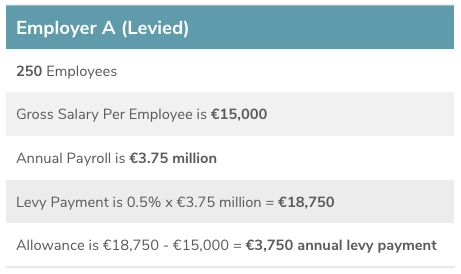A crucial part of reforming the Apprenticeship Program, the Apprenticeship Levy was created to help grow the quantity and quality of apprenticeships across England. The Apprenticeship Levy serves to help fund training programs in organizations across England, large and small. If you’re an employer with a workforce in England, this levy impacts you. And, if you’re an employer with over £3 million in UK payroll, there’s additional information you should be aware of.
Here’s an in-depth look at how the Apprenticeship Levy and funding impacts your organization, more on how it works, and why it’s beneficial to you and the overall quality of the Apprenticeship Program throughout England.
What the Apprenticeship Levy Is
The Apprenticeship Levy has been in effect since April 6, 2017, and the new system has several ambitious goals: promote programs for the youth, promote programs for high-skill occupations (think STEM careers), engage employers, and enable the government to double investment in apprenticeships by the year 2020.
The availability of apprenticeship funds to all employers began in May 2017.
How Payments Are Calculated
Accounting for approximately 2 percent of all employers with an England workforce, all organizations with over £3 million in England payroll will be required to pay the Apprenticeship Levy at a rate of 0.5 percent of each payroll exceeding that amount. To offset the levy payment, these same employers will be provided a £15,000 allowance to apply to training and assessment.
Employers not required to pay the Apprenticeship Levy will still have the ability to purchase apprenticeship training from a provider. In turn, the government will pay 90 percent of the costs associated with training and assessment, leaving the employer to pay just 10 percent. This can provide an additional incentive for smaller organizations to invest in apprenticeship programs at a more affordable cost as well.
For an example, see the graphic.
Not sure how to calculate your payment? You can check out the government’s web tool to help you estimate your apprenticeship funding.
Apprenticeships Portal: Going Digital
Employers are required to declare the Apprenticeship Levy to HM Revenue and Customs (also known as HMRC), and afterward will have the ability to access the apprenticeship funding through the new digital platform.
The services included on the new digital platform enable employers to estimate their funding, find apprenticeship training, recruit apprentices, manage apprenticeship funding, and add additional apprenticeships as needed.
The platform was created to help employers in four different ways:
- More Control: Employers set up an account, access funding for apprenticeship training, choose the type and number of apprenticeships they will run, and select a training provider that best matches their needs as an organization.
- More Apprenticeships: Employers have access to the new apprenticeship standards which were designed by employers themselves.
- More Quality: Employers can quickly find the right apprenticeship programs, government approved training, and qualified trainers to deliver the training.
- More Diversity & Social Mobility: Apprenticeships will help to increase diversity and social mobility, enabling learners to study without going into deep debt. In return, employers have access to a diverse talent pool as well.
Let’s Take a Page From England’s Book
The UK and England continue to be innovative and disruptive to workforce regulations. Although a very bold move to get more employers to take the Apprenticeship Program more seriously, there’s definitely something to be said here.
Through England’s Apprenticeship Program, younger students and non-traditional individuals have the ability to gain insight into and experience in a field earlier without going into debt. In fact, 90 percent of apprentices currently go into work for further training, and 36 percent report getting a promotion after completing their apprenticeship.
In the U.S. alone, 19 percent of college students are completing a four-year college program, and 35 percent are graduating after five to six years. Aside from the occasional internship, that’s four to six years before a college graduate is entering the workforce to get hands-on experience in their field of choice.
Although more universities are seeing the importance of offering more of a co-op opportunity for students in the U.S., we really should take a page from England’s book.
There’s a lot more to the Apprenticeship Levy. Please visit Government’s Apprenticeship Funding FAQs to learn more about how this impacts your organization.
